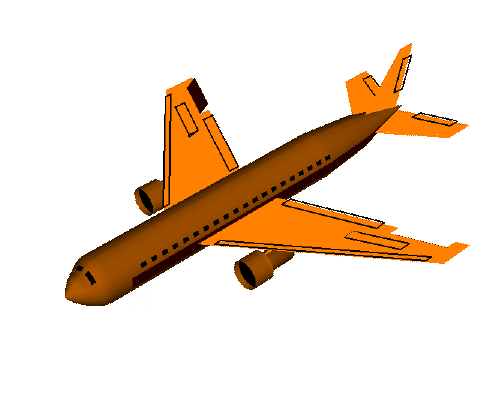| Welcome to the Beginner's Guide to Aerodynamics | ||||
 |
||||
| What is aerodynamics? The word comes from two Greek words: aerios, concerning the air, and dynamis, which means force. Aerodynamics is the study of forces and the resulting motion of objects through the air. Judging from the story of Daedalus and Icarus, humans have been interested in aerodynamics and flying for thousands of years, although flying in a heavier-than-air machine has been possible only in the last hundred years. Aerodynamics affects the motion of a large airliner, a model rocket, a beach ball thrown near the shore, or a kite flying high overhead. The curveball thrown by big league baseball pitchers gets its curve from aerodynamics. | ||||
|
At this Web site you can study aerodynamics at your own pace and to your own level of interest. Some of the topics included are: Newton's basic equations of motion; the motion of a free falling object, that neglects the effects of aerodynamics; the terminal velocity of a falling object subject to both weight and air resistance; the three forces (lift, drag, and weight) that act on a glider; and finally, the four forces that act on a powered airplane. Because aerodynamics involves both the motion of the object and the reaction of the air, there are several pages devoted to basic gas properties and how those properties change through the atmosphere. There is a special section of the Beginner's Guide which deals with compressible, or high speed, aerodynamics. This section is intended for undergraduates who are studying shock waves or isentropic flows and contains several calculators and simulators for that flow regime. . There are many pages here connected to one another through hyperlinks and you can then navigate through the links based on your own interest and inquiry. There is an Aerodynamics Index of topics that you 
| ||||
Autopilot technology drives Teslas but comes with warning s July 21, 2016 by Abosede peter In this Sept. 29, 2015 file photo, Elon Musk, CEO of Tesla Motors Inc., introduces the Model X car at the company's headquarters in Fremont, Calif. A Tesla in Autopilot mode can drive itself but it's not a "self-driving" vehicle, at least … more A Tesla in Autopilot mode can drive itself but it's not a "self-driving" vehicle, at least as far as safety regulators are concerned. So, instead of coming under heavy government scrutiny before being sold to the public, Tesla can mass-produce cars that automatically adjust speed with the flow of traffic, keep their lane and slam the brakes in an emergency. Tesla tells its customers to stay alert while driving, only use the technology on divided highways, keep their hands on the wheel and be prepared to take over should the technology fail. Some clearly don't—online videos, including some with the "dri...
its nice
ReplyDelete